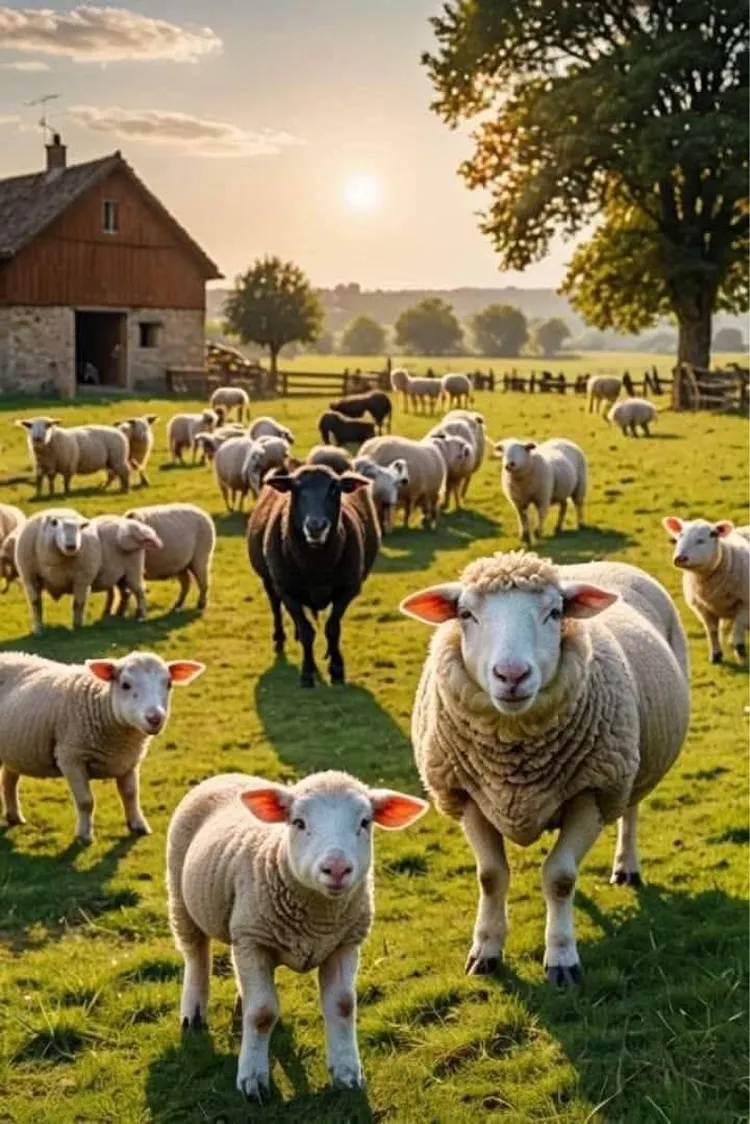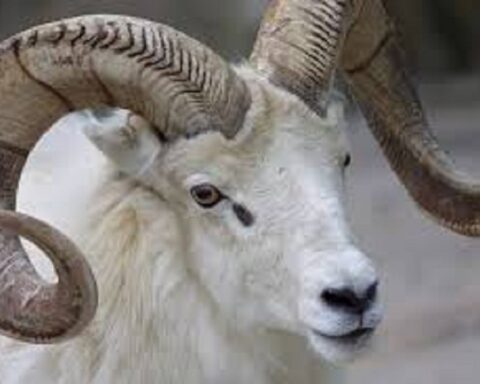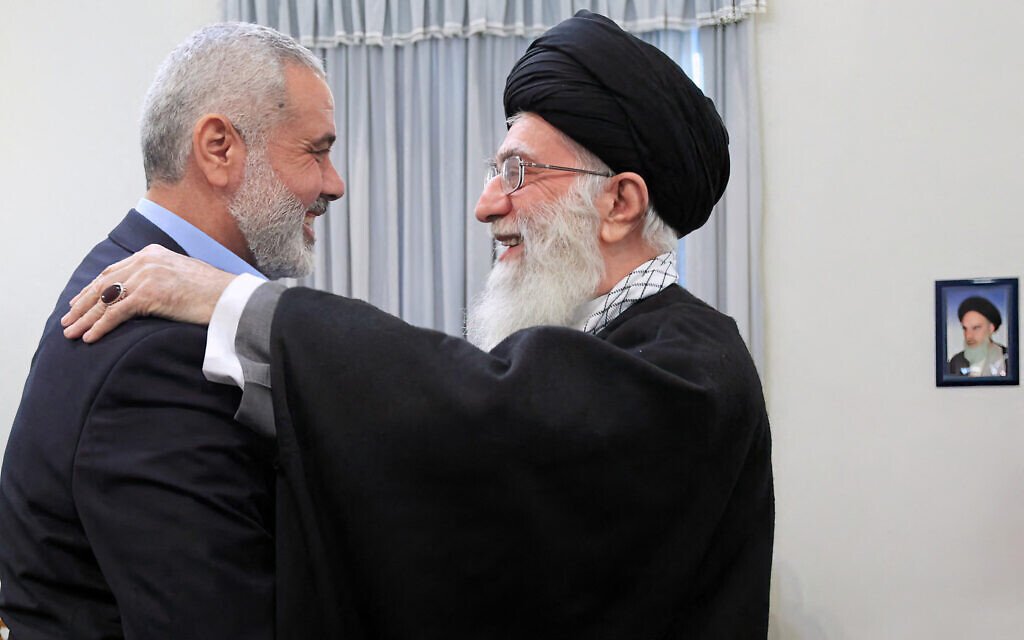By Agbeze Ireke Kalu Onuma, AI-KO
And those who were seen dancing were thought to be insane by those who could not hear the music. —Friedrich Nietzsche
What if the “black sheep” isn’t a mistake at all, but a masterpiece slowly taking shape?
This morning, as the world woke up fresh and cool after the night rain, that thought came to me. The air from outside was thick with the smell of wet earth, and the soft songs of birds on my whistling pine trees, made the moment feel almost sacred. It felt like the perfect setting to think about what it really means to belong, to be different, and to discover who we truly are.
As I sat with this notion, I turned, as I often do, to my collection of photographs gathered from countless wanderings, both physical and digital. These images, a frozen waterfall, the intricate architecture of a leaf, the silent majesty of a mountain range at dawn offer solace and a profound thrill, a deeper understanding of the universe’s grandeur. It is a form of prayer without words, a conversation with creation and the Creator. Today, with the lingering thoughts of the black sheep of myself, and of many others I have known I wandered through this digital gallery until my search, almost as if guided, led me to the picture…
The accompanying image shows a tranquil field bathed in golden light. Sheep graze peacefully, a sea of white wool, and among them, one stands out: a single black sheep. This is more than a pastoral scene; it is a visual psalm, a quiet hymn for a concept deeply embedded in our cultural consciousness. To understand the weight of this metaphor, we must first touch its roots. Historically, the term emerged from the literal practice of sheep breeding. In flocks prized for their uniformly white wool, a black lamb would occasionally appear, a surprise written in recessive genes. Its fleece, resistant to the dye art, was deemed commercially inferior. Thus, a simple biological anomaly was slowly, inevitably, woven into a metaphor for social deviance. The one who didn’t fit, who disrupted the pristine uniformity of the flock, became the black sheep a blemish on the family name, a disappointment to the tribe.
But the deeper irony lies buried in older soil. The metaphor, like many we inherit, has been twisted by time and selective memory. In Genesis, Jacob specifically asks for the speckled, spotted, and dark sheep as his wages, a mark of divine providence and honest labor. In some English and Catalan traditions, a black sheep in the flock was considered a token of good luck, a protector. What was once a symbol of integrity or fortune was bleached by conformity into a label of disgrace. This shift tells us less about the sheep and more about ourselves about our growing obsession with sameness and our fear of the un-dye-able, the naturally distinct.
This conversation about difference and belonging finds a powerful echo in Igbo cosmology and worldview. The Igbo saying, “Onye aghala nwanne ya,” translates to “do not leave your sibling,” but its meaning runs deeper than mere proximity; it is an invocation of interconnectedness. Within this framework, the individual who stands apart is not automatically an outcast. Instead, they can be seen as fulfilling a unique destiny, a specific role assigned by their Chi, one’s personal god. The concept of Ikenga, the symbol of personal strength and achievement, celebrates the individual’s journey to forge their own path. Yet, this individuality is always in dynamic tension with the community’s needs. The black sheep, therefore, is not simply rejected. Their path is watched with a mixture of anxiety and hope, for the Igbo understanding is that a community’s strength lies in the diversity of its parts. The person who challenges norms, who goes to a distant land, who brings back new ideas they are the arrowhead, who clears the path for others. Their difference, if eventually proven to bring strength or wisdom to the whole, can be absorbed and celebrated, transforming the black sheep from a point of shame into a pillar of innovation. This worldview teaches that belonging is not about uniformity, but about a complex, sometimes difficult, covenant where the individual’s unique gift is ultimately meant to serve the collective soul.
Open in appSign up
Sign in
Search
You’re reading for free via Agbeze Ireke Kalu Onuma, AI-KO’s Friend Link. Become a member to access the best of Medium.
Member-only story
The Black Sheep Within Us – A Reflection on Belonging, Difference, and Identity
Agbeze Ireke Kalu Onuma, AI-KO
Follow
17 min read·
3 hours ago
Listen
Share
By Agbeze Ireke Kalu Onuma, AI-KO
Press enter or click to view image in full size
And those who were seen dancing were thought to be insane by those who could not hear the music. —Friedrich Nietzsche
What if the “black sheep” isn’t a mistake at all, but a masterpiece slowly taking shape?
This morning, as the world woke up fresh and cool after the night rain, that thought came to me. The air from outside was thick with the smell of wet earth, and the soft songs of birds on my whistling pine trees, made the moment feel almost sacred. It felt like the perfect setting to think about what it really means to belong, to be different, and to discover who we truly are.
As I sat with this notion, I turned, as I often do, to my collection of photographs gathered from countless wanderings, both physical and digital. These images, a frozen waterfall, the intricate architecture of a leaf, the silent majesty of a mountain range at dawn offer solace and a profound thrill, a deeper understanding of the universe’s grandeur. It is a form of prayer without words, a conversation with creation and the Creator. Today, with the lingering thoughts of the black sheep of myself, and of many others I have known I wandered through this digital gallery until my search, almost as if guided, led me to the picture…
The accompanying image shows a tranquil field bathed in golden light. Sheep graze peacefully, a sea of white wool, and among them, one stands out: a single black sheep. This is more than a pastoral scene; it is a visual psalm, a quiet hymn for a concept deeply embedded in our cultural consciousness. To understand the weight of this metaphor, we must first touch its roots. Historically, the term emerged from the literal practice of sheep breeding. In flocks prized for their uniformly white wool, a black lamb would occasionally appear, a surprise written in recessive genes. Its fleece, resistant to the dye art, was deemed commercially inferior. Thus, a simple biological anomaly was slowly, inevitably, woven into a metaphor for social deviance. The one who didn’t fit, who disrupted the pristine uniformity of the flock, became the black sheep a blemish on the family name, a disappointment to the tribe.
But the deeper irony lies buried in older soil. The metaphor, like many we inherit, has been twisted by time and selective memory. In Genesis, Jacob specifically asks for the speckled, spotted, and dark sheep as his wages, a mark of divine providence and honest labor. In some English and Catalan traditions, a black sheep in the flock was considered a token of good luck, a protector. What was once a symbol of integrity or fortune was bleached by conformity into a label of disgrace. This shift tells us less about the sheep and more about ourselves about our growing obsession with sameness and our fear of the un-dye-able, the naturally distinct.
This conversation about difference and belonging finds a powerful echo in Igbo cosmology and worldview. The Igbo saying, “Onye aghala nwanne ya,” translates to “do not leave your sibling,” but its meaning runs deeper than mere proximity; it is an invocation of interconnectedness. Within this framework, the individual who stands apart is not automatically an outcast. Instead, they can be seen as fulfilling a unique destiny, a specific role assigned by their Chi, one’s personal god. The concept of Ikenga, the symbol of personal strength and achievement, celebrates the individual’s journey to forge their own path. Yet, this individuality is always in dynamic tension with the community’s needs. The black sheep, therefore, is not simply rejected. Their path is watched with a mixture of anxiety and hope, for the Igbo understanding is that a community’s strength lies in the diversity of its parts. The person who challenges norms, who goes to a distant land, who brings back new ideas they are the arrowhead, who clears the path for others. Their difference, if eventually proven to bring strength or wisdom to the whole, can be absorbed and celebrated, transforming the black sheep from a point of shame into a pillar of innovation. This worldview teaches that belonging is not about uniformity, but about a complex, sometimes difficult, covenant where the individual’s unique gift is ultimately meant to serve the collective soul.
From a Stoic vantage point, this very state of being different is not a curse but a calling. It is the lived experience of Marcus Aurelius admonition: the impediment to action advances action. What stands in the way becomes the way. To be the black sheep is to be handed the raw materials for forging an unshakeable character. Forced out of the easy camouflage of the herd, one must cultivate resources others may never need: resilience, profound self-awareness, and a virtue that is internally validated, not externally granted. The Stoic seeks alignment not with the herd approval, but with nature, reason, and his own moral compass. In this way, the black sheep, exiled from easy belonging, becomes the most Stoic of all, learning to graze on its own principles and find shelter in the fortress of its own mind. Consider the artist who works for decades in obscurity, faithful only to her vision, or the whistleblower who stands alone for a principle. They are the black sheep of their respective flocks, yet their obstacles becomes their way to a unique form of integrity.
Beyond philosophy and culture, the black sheep represents the souls essential journey through exile and return. In the great spiritual narratives, the outsider is almost always the one chosen for a profound transformation. Moses, cast out of Egypt, becomes the leader of a nation. Jesus, rejected by his own people, embodies a new covenant. Siddhartha Gautama, the prince who left the palace, became the Buddha. The black sheep archetype is the spiritual seeker the one who must leave the familiar, comfortable pasture to find the divine in the wilderness. This is not a punishment, but a sacred assignment.
The weight of this role cuts deep, not in some abstract way, but in the most personal and human sense. Nowhere is it sharper than within the family, where the label of black sheep is often stamped with a mix of fear, shame, and quiet disappointment. At its core, it exposes how uneasy we are with difference – how quickly we confuse sameness with loyalty.
Sign up
Sign in
Search
You’re reading for free via Agbeze Ireke Kalu Onuma, AI-KO’s Friend Link. Become a member to access the best of Medium.
Member-only story
The Black Sheep Within Us – A Reflection on Belonging, Difference, and Identity
Agbeze Ireke Kalu Onuma, AI-KO
Follow
17 min read·
3 hours ago
Listen
Share
By Agbeze Ireke Kalu Onuma, AI-KO
Press enter or click to view image in full size
And those who were seen dancing were thought to be insane by those who could not hear the music. —Friedrich Nietzsche
What if the “black sheep” isn’t a mistake at all, but a masterpiece slowly taking shape?
This morning, as the world woke up fresh and cool after the night rain, that thought came to me. The air from outside was thick with the smell of wet earth, and the soft songs of birds on my whistling pine trees, made the moment feel almost sacred. It felt like the perfect setting to think about what it really means to belong, to be different, and to discover who we truly are.
As I sat with this notion, I turned, as I often do, to my collection of photographs gathered from countless wanderings, both physical and digital. These images, a frozen waterfall, the intricate architecture of a leaf, the silent majesty of a mountain range at dawn offer solace and a profound thrill, a deeper understanding of the universe’s grandeur. It is a form of prayer without words, a conversation with creation and the Creator. Today, with the lingering thoughts of the black sheep of myself, and of many others I have known I wandered through this digital gallery until my search, almost as if guided, led me to the picture…
The accompanying image shows a tranquil field bathed in golden light. Sheep graze peacefully, a sea of white wool, and among them, one stands out: a single black sheep. This is more than a pastoral scene; it is a visual psalm, a quiet hymn for a concept deeply embedded in our cultural consciousness. To understand the weight of this metaphor, we must first touch its roots. Historically, the term emerged from the literal practice of sheep breeding. In flocks prized for their uniformly white wool, a black lamb would occasionally appear, a surprise written in recessive genes. Its fleece, resistant to the dye art, was deemed commercially inferior. Thus, a simple biological anomaly was slowly, inevitably, woven into a metaphor for social deviance. The one who didn’t fit, who disrupted the pristine uniformity of the flock, became the black sheep a blemish on the family name, a disappointment to the tribe.
But the deeper irony lies buried in older soil. The metaphor, like many we inherit, has been twisted by time and selective memory. In Genesis, Jacob specifically asks for the speckled, spotted, and dark sheep as his wages, a mark of divine providence and honest labor. In some English and Catalan traditions, a black sheep in the flock was considered a token of good luck, a protector. What was once a symbol of integrity or fortune was bleached by conformity into a label of disgrace. This shift tells us less about the sheep and more about ourselves about our growing obsession with sameness and our fear of the un-dye-able, the naturally distinct.
This conversation about difference and belonging finds a powerful echo in Igbo cosmology and worldview. The Igbo saying, “Onye aghala nwanne ya,” translates to “do not leave your sibling,” but its meaning runs deeper than mere proximity; it is an invocation of interconnectedness. Within this framework, the individual who stands apart is not automatically an outcast. Instead, they can be seen as fulfilling a unique destiny, a specific role assigned by their Chi, one’s personal god. The concept of Ikenga, the symbol of personal strength and achievement, celebrates the individual’s journey to forge their own path. Yet, this individuality is always in dynamic tension with the community’s needs. The black sheep, therefore, is not simply rejected. Their path is watched with a mixture of anxiety and hope, for the Igbo understanding is that a community’s strength lies in the diversity of its parts. The person who challenges norms, who goes to a distant land, who brings back new ideas they are the arrowhead, who clears the path for others. Their difference, if eventually proven to bring strength or wisdom to the whole, can be absorbed and celebrated, transforming the black sheep from a point of shame into a pillar of innovation. This worldview teaches that belonging is not about uniformity, but about a complex, sometimes difficult, covenant where the individual’s unique gift is ultimately meant to serve the collective soul.
From a Stoic vantage point, this very state of being different is not a curse but a calling. It is the lived experience of Marcus Aurelius admonition: the impediment to action advances action. What stands in the way becomes the way. To be the black sheep is to be handed the raw materials for forging an unshakeable character. Forced out of the easy camouflage of the herd, one must cultivate resources others may never need: resilience, profound self-awareness, and a virtue that is internally validated, not externally granted. The Stoic seeks alignment not with the herd approval, but with nature, reason, and his own moral compass. In this way, the black sheep, exiled from easy belonging, becomes the most Stoic of all, learning to graze on its own principles and find shelter in the fortress of its own mind. Consider the artist who works for decades in obscurity, faithful only to her vision, or the whistleblower who stands alone for a principle. They are the black sheep of their respective flocks, yet their obstacles becomes their way to a unique form of integrity.
Beyond philosophy and culture, the black sheep represents the souls essential journey through exile and return. In the great spiritual narratives, the outsider is almost always the one chosen for a profound transformation. Moses, cast out of Egypt, becomes the leader of a nation. Jesus, rejected by his own people, embodies a new covenant. Siddhartha Gautama, the prince who left the palace, became the Buddha. The black sheep archetype is the spiritual seeker the one who must leave the familiar, comfortable pasture to find the divine in the wilderness. This is not a punishment, but a sacred assignment.
The weight of this role cuts deep, not in some abstract way, but in the most personal and human sense. Nowhere is it sharper than within the family, where the label of black sheep is often stamped with a mix of fear, shame, and quiet disappointment. At its core, it exposes how uneasy we are with difference – how quickly we confuse sameness with loyalty.
The one who dares to question inherited beliefs, who chooses a road no one else has walked, or who refuses to keep repeating the family’s old patterns is cast as the troublemaker. Yet this judgment rarely speaks to their failure; it speaks to the family’s own fragility. The so-called black sheep doesn’t just stand apart – they hold up a mirror. And often, what that mirror reflects back is a truth the rest would rather not face.
In Yoruba cosmology, for instance, difference is not deficiency; it is destiny. The orisha Eshu, the trickster and messenger who walks at the crossroads, is often misunderstood by those who seek simple order. Yet, he is essential for communication between realms. The black sheep, then, is not the one who lacks, but the one who carries a unique burden calling to awaken others through the necessary friction of contrast. It is the quiet family member who, at a holiday dinner, speaks a gentle but firm truth about a long-held secret, disrupting the peace to make room for a more authentic healing. Their exile in that moment is a form of service.
Yet, in the photograph that sparked this reflection, there is a profound peace. The black sheep does not hide. It does not posture or protest. It simply grazes, calm and present, among the white sheep, bathed in the same golden sunlight, rooted in the same earth. It is not angry, nor is it ashamed. It simply is. This is the ultimate lesson: to exist fully, without apology, without the need to either fight the flock or beg for its acceptance. The rustic house, the trees, the fence in the background they frame a world that is both structured and wild. The black sheep lives within this very tension. It belongs to the landscape, and yet it is distinct within it. It is part of the flock, and apart from it. This is the image of integration we must strive for: to honor our connections without sacrificing our essence.
difference.
Every family carries its own unspoken rules, its own silent bargains. To step outside them – whether by challenging tradition, choosing a path no one else dares to walk, or loving in ways that defy approval – is to risk being cast aside. In truth, the discomfort often lies not in the rebel’s choices, but in what those choices reveal: the dreams parents buried, the compromises siblings made, the truths everyone agreed not to name.
The loneliness of that position is undeniable – it can feel like standing in a storm with no shelter, a chill that seeps into the soul. And yet, out of that exile often comes a strange kind of power. As James Baldwin once said, “The place in which I’ll fit will not exist until I make it.” The black sheep, in being pushed away, learns to build. They become architects of new spaces, shaping a pasture wide enough for authenticity, courage, and freedom to finally take root.
For the parent who feels like a black sheep for raising their children with values contrary to the times, this is for you. For the son or daughter who chose a path of service over wealth, this is your story. For the quiet dreamer in a family of pragmatists, for the person healing generational trauma, for the one who speaks their truth in a room full of echoes at different moments, we all wear the black fleece. It is not an anomaly of the human experience; it is the heart of it. It is to walk the knifes edge between acceptance and authenticity, to know that love from others may not always come in the form we hope for, but that our own self-love must become a non-negotiable covenant.
Open in appSign up
Sign in
Search
You’re reading for free via Agbeze Ireke Kalu Onuma, AI-KO’s Friend Link. Become a member to access the best of Medium.
Member-only story
The Black Sheep Within Us – A Reflection on Belonging, Difference, and Identity
Agbeze Ireke Kalu Onuma, AI-KO
Follow
17 min read·
3 hours ago
Listen
Share
By Agbeze Ireke Kalu Onuma, AI-KO
Press enter or click to view image in full size
And those who were seen dancing were thought to be insane by those who could not hear the music. —Friedrich Nietzsche
What if the “black sheep” isn’t a mistake at all, but a masterpiece slowly taking shape?
This morning, as the world woke up fresh and cool after the night rain, that thought came to me. The air from outside was thick with the smell of wet earth, and the soft songs of birds on my whistling pine trees, made the moment feel almost sacred. It felt like the perfect setting to think about what it really means to belong, to be different, and to discover who we truly are.
As I sat with this notion, I turned, as I often do, to my collection of photographs gathered from countless wanderings, both physical and digital. These images, a frozen waterfall, the intricate architecture of a leaf, the silent majesty of a mountain range at dawn offer solace and a profound thrill, a deeper understanding of the universe’s grandeur. It is a form of prayer without words, a conversation with creation and the Creator. Today, with the lingering thoughts of the black sheep of myself, and of many others I have known I wandered through this digital gallery until my search, almost as if guided, led me to the picture…
The accompanying image shows a tranquil field bathed in golden light. Sheep graze peacefully, a sea of white wool, and among them, one stands out: a single black sheep. This is more than a pastoral scene; it is a visual psalm, a quiet hymn for a concept deeply embedded in our cultural consciousness. To understand the weight of this metaphor, we must first touch its roots. Historically, the term emerged from the literal practice of sheep breeding. In flocks prized for their uniformly white wool, a black lamb would occasionally appear, a surprise written in recessive genes. Its fleece, resistant to the dye art, was deemed commercially inferior. Thus, a simple biological anomaly was slowly, inevitably, woven into a metaphor for social deviance. The one who didn’t fit, who disrupted the pristine uniformity of the flock, became the black sheep a blemish on the family name, a disappointment to the tribe.
But the deeper irony lies buried in older soil. The metaphor, like many we inherit, has been twisted by time and selective memory. In Genesis, Jacob specifically asks for the speckled, spotted, and dark sheep as his wages, a mark of divine providence and honest labor. In some English and Catalan traditions, a black sheep in the flock was considered a token of good luck, a protector. What was once a symbol of integrity or fortune was bleached by conformity into a label of disgrace. This shift tells us less about the sheep and more about ourselves about our growing obsession with sameness and our fear of the un-dye-able, the naturally distinct.
This conversation about difference and belonging finds a powerful echo in Igbo cosmology and worldview. The Igbo saying, “Onye aghala nwanne ya,” translates to “do not leave your sibling,” but its meaning runs deeper than mere proximity; it is an invocation of interconnectedness. Within this framework, the individual who stands apart is not automatically an outcast. Instead, they can be seen as fulfilling a unique destiny, a specific role assigned by their Chi, one’s personal god. The concept of Ikenga, the symbol of personal strength and achievement, celebrates the individual’s journey to forge their own path. Yet, this individuality is always in dynamic tension with the community’s needs. The black sheep, therefore, is not simply rejected. Their path is watched with a mixture of anxiety and hope, for the Igbo understanding is that a community’s strength lies in the diversity of its parts. The person who challenges norms, who goes to a distant land, who brings back new ideas they are the arrowhead, who clears the path for others. Their difference, if eventually proven to bring strength or wisdom to the whole, can be absorbed and celebrated, transforming the black sheep from a point of shame into a pillar of innovation. This worldview teaches that belonging is not about uniformity, but about a complex, sometimes difficult, covenant where the individual’s unique gift is ultimately meant to serve the collective soul.
From a Stoic vantage point, this very state of being different is not a curse but a calling. It is the lived experience of Marcus Aurelius admonition: the impediment to action advances action. What stands in the way becomes the way. To be the black sheep is to be handed the raw materials for forging an unshakeable character. Forced out of the easy camouflage of the herd, one must cultivate resources others may never need: resilience, profound self-awareness, and a virtue that is internally validated, not externally granted. The Stoic seeks alignment not with the herd approval, but with nature, reason, and his own moral compass. In this way, the black sheep, exiled from easy belonging, becomes the most Stoic of all, learning to graze on its own principles and find shelter in the fortress of its own mind. Consider the artist who works for decades in obscurity, faithful only to her vision, or the whistleblower who stands alone for a principle. They are the black sheep of their respective flocks, yet their obstacles becomes their way to a unique form of integrity.
Beyond philosophy and culture, the black sheep represents the souls essential journey through exile and return. In the great spiritual narratives, the outsider is almost always the one chosen for a profound transformation. Moses, cast out of Egypt, becomes the leader of a nation. Jesus, rejected by his own people, embodies a new covenant. Siddhartha Gautama, the prince who left the palace, became the Buddha. The black sheep archetype is the spiritual seeker the one who must leave the familiar, comfortable pasture to find the divine in the wilderness. This is not a punishment, but a sacred assignment.
The weight of this role cuts deep, not in some abstract way, but in the most personal and human sense. Nowhere is it sharper than within the family, where the label of black sheep is often stamped with a mix of fear, shame, and quiet disappointment. At its core, it exposes how uneasy we are with difference – how quickly we confuse sameness with loyalty.
The one who dares to question inherited beliefs, who chooses a road no one else has walked, or who refuses to keep repeating the family’s old patterns is cast as the troublemaker. Yet this judgment rarely speaks to their failure; it speaks to the family’s own fragility. The so-called black sheep doesn’t just stand apart – they hold up a mirror. And often, what that mirror reflects back is a truth the rest would rather not face.
In Yoruba cosmology, for instance, difference is not deficiency; it is destiny. The orisha Eshu, the trickster and messenger who walks at the crossroads, is often misunderstood by those who seek simple order. Yet, he is essential for communication between realms. The black sheep, then, is not the one who lacks, but the one who carries a unique burden calling to awaken others through the necessary friction of contrast. It is the quiet family member who, at a holiday dinner, speaks a gentle but firm truth about a long-held secret, disrupting the peace to make room for a more authentic healing. Their exile in that moment is a form of service.
Yet, in the photograph that sparked this reflection, there is a profound peace. The black sheep does not hide. It does not posture or protest. It simply grazes, calm and present, among the white sheep, bathed in the same golden sunlight, rooted in the same earth. It is not angry, nor is it ashamed. It simply is. This is the ultimate lesson: to exist fully, without apology, without the need to either fight the flock or beg for its acceptance. The rustic house, the trees, the fence in the background they frame a world that is both structured and wild. The black sheep lives within this very tension. It belongs to the landscape, and yet it is distinct within it. It is part of the flock, and apart from it. This is the image of integration we must strive for: to honor our connections without sacrificing our essence.
The sting of being marked as the outsider runs deep, especially when it comes from the very people we call our own. Within families – the first place we expect acceptance – the label of black sheep often lands with a heavy weight, wrapped in fear, disappointment, or quiet disapproval. What it really uncovers is not the failure of the individual, but the unease families feel when faced with difference.
Every family carries its own unspoken rules, its own silent bargains. To step outside them – whether by challenging tradition, choosing a path no one else dares to walk, or loving in ways that defy approval – is to risk being cast aside. In truth, the discomfort often lies not in the rebel’s choices, but in what those choices reveal: the dreams parents buried, the compromises siblings made, the truths everyone agreed not to name.
The loneliness of that position is undeniable – it can feel like standing in a storm with no shelter, a chill that seeps into the soul. And yet, out of that exile often comes a strange kind of power. As James Baldwin once said, “The place in which I’ll fit will not exist until I make it.” The black sheep, in being pushed away, learns to build. They become architects of new spaces, shaping a pasture wide enough for authenticity, courage, and freedom to finally take root.
For the parent who feels like a black sheep for raising their children with values contrary to the times, this is for you. For the son or daughter who chose a path of service over wealth, this is your story. For the quiet dreamer in a family of pragmatists, for the person healing generational trauma, for the one who speaks their truth in a room full of echoes at different moments, we all wear the black fleece. It is not an anomaly of the human experience; it is the heart of it. It is to walk the knifes edge between acceptance and authenticity, to know that love from others may not always come in the form we hope for, but that our own self-love must become a non-negotiable covenant.
At different moments in our lives, we all wear the black fleece. In our families, when our choices defy expectation. In our workplaces, when our integrity prevents us from following an unethical crowd. In our own minds, when we wrestle with doubts, traumas, or dreams that feel too vast and strange for the world to hold. To be the black sheep is not an anomaly of the human experience; it is the heart of it. It is to walk the knife’s edge between acceptance and authenticity. It is to know that love from others may not always come in the form we hope for, but that our own self-love must become a non-negotiable covenant.
Now let’s take a trip around the world, to draw the lessons a bit closer. We will meet five people who were called and labelled the “black sheep” by their families, communities, friends and people everywhere. These, for me, are not just stories about causing trouble or looking different. They are stories about finding your true self. They show us that being different can be the start of becoming something great.
We start in Kenya, with a woman named Wangari Maathai. She went to school in America and Europe and learned new ideas. When she returned home, she told people that planting trees was important. She said women should have power and leaders should be honest. In a place where men were in charge and women were told to be quiet, this made people angry. They called her names. They put her in jail. But she did not stop. Her idea grew into a movement that planted over 50 million trees. She was called “the crazy tree woman,” but now the whole world knows she was a hero. Her lesson is simple: Sometimes, you see a problem everyone else ignores. Being the black sheep means you are brave enough to fix it.
Next, we go to East Asia, to a young man named Stephen. His family was very religious, and his brother was a perfect pastor. But Stephen was the troublemaker. He asked too many questions. He didn’t fit in, even at church school. Then, he went to help poor teenagers in the Philippines. Suddenly, his difference was his power. He understood these young people because he knew what it felt like to be an outsider. His own pain helped him heal theirs. Now, he is a pastor too, but for people who feel left out. His lesson is: Your greatest pain can become your greatest gift. The wounds you carry can help you heal others.
In South America, a well-known short story tells of a black sheep. The story says the sheep was killed because it was different. One hundred years later, the other sheep built a statue to honor it. But then, they killed the next black sheep that came along. This shows a sad truth. People often praise rebels only after they are gone. They love the idea of being different, but they are scared of a real person who is different today. The lesson is not to wait for a statue. The lesson is to be proud of your unique color, right now.
Then, we go to Europe, to a man named Richard. He was the wild one in his family. He got into drugs and crime. One night, he crashed his car and almost died. Waking up in the hospital, broken, he saw his father standing by his bed. That love changed him. He turned his life around. Now, he uses his story to help people who are as lost as he was. His lesson is powerful: Sometimes, you have to break completely to be rebuilt stronger. Your lowest point can be your turning point.
Finally, in America, we meet Chloe. She has a mixed background—Filipino and Chinese. In her white family, she looked different. People, even teachers, didn’t believe she belonged. She felt like an outsider in her own home. Instead of hiding, she embraced who she was. She became a writer and told stories about people like her. She learned that standing between two worlds doesn’t mean you don’t belong anywhere. It means you can build a new world of your own. She turned her confusion into a source of strength.
This idea of the black sheep is not new. It is an ancient story, told again and again throughout history. Long before our modern heroes, there were others who walked this path.
In ancient Athens, a man named Socrates was a black sheep. He asked difficult questions that made powerful people uncomfortable. The city, like a flock that demands sameness, could not tolerate his different way of thinking. They forced him to drink poison. But his ideas, which seemed so dangerous then, are now the foundation of much of our philosophy. His story teaches us that the flock often attacks the very thinker who could lead them to a better place.
In the Middle Ages, people were superstitious. A black sheep in the flock was sometimes seen as a bad omen, a sign of the devil. They would drive it away, believing its difference could bring a curse. This shows a dark truth: people often fear what is different and blame it for their problems. The black sheep becomes a scapegoat, carrying burdens that are not its own.
But even then, there were black sheep who shone. A woman named Hildegard of Bingen lived in a 12th-century monastery. She was a visionary who had powerful ideas about science and spirituality. As a woman in a man’s world, she was dismissed and doubted. She was a black sheep in her own community. Yet today, we remember her as a saint and a genius. Her life proves that great insight often comes from those who are pushed to the margins.
These stories from the past are not just old tales. They are the same story we see today. When Wangari Maathai stood up to a government, she was walking the same path as Socrates. When Stephen felt like an outsider in his own church, he shared the experience of Hildegard. When Chloe felt out of place in her family, she faced the same fear that medieval farmers felt toward a black lamb.
The black sheep is not a modern problem. It is a human story. It is the story of anyone who has ever felt different, questioned the rules, or seen the world in a unique way. They are the ones who, throughout time, have pushed us forward.
I’ve lived most of my adult life in Nigeria, and if there’s one truth that has quietly shaped my worldview, it’s. this: I have always been drawn to the unusual. The men and women who live outside the margins not because they were pushed there, but because they chose it. They are the ones who refuse to be boxed, labeled, or domesticated by society’s expectations. And though they walk among us, there is something about them that shifts the air when they enter a room. A silence. A tension. A mix of fear and awe. It is as if their very presence reminds us of something we have buried our own longing to be free.
These are the black sheep. Not just in the literal sense, but in the archetypal one. The ones we need, but only dare approach in the cloak of darkness. In daylight, we might mock them, but in whispers, we admire them. They are often ordinary in appearance, yet it is our own imaginations, our fears, and our whispered judgments that imbue them with an aura of mystery. And if we are honest, each of us has such a figure in our circles, don’t we? We project onto them the courage we lack, the wildness we suppress, the authenticity we crave.
Open in appSign up
Sign in
Search
You’re reading for free via Agbeze Ireke Kalu Onuma, AI-KO’s Friend Link. Become a member to access the best of Medium.
Member-only story
The Black Sheep Within Us – A Reflection on Belonging, Difference, and Identity
Agbeze Ireke Kalu Onuma, AI-KO
Follow
17 min read·
3 hours ago
Listen
Share
By Agbeze Ireke Kalu Onuma, AI-KO
Press enter or click to view image in full size
And those who were seen dancing were thought to be insane by those who could not hear the music. —Friedrich Nietzsche
What if the “black sheep” isn’t a mistake at all, but a masterpiece slowly taking shape?
This morning, as the world woke up fresh and cool after the night rain, that thought came to me. The air from outside was thick with the smell of wet earth, and the soft songs of birds on my whistling pine trees, made the moment feel almost sacred. It felt like the perfect setting to think about what it really means to belong, to be different, and to discover who we truly are.
As I sat with this notion, I turned, as I often do, to my collection of photographs gathered from countless wanderings, both physical and digital. These images, a frozen waterfall, the intricate architecture of a leaf, the silent majesty of a mountain range at dawn offer solace and a profound thrill, a deeper understanding of the universe’s grandeur. It is a form of prayer without words, a conversation with creation and the Creator. Today, with the lingering thoughts of the black sheep of myself, and of many others I have known I wandered through this digital gallery until my search, almost as if guided, led me to the picture…
The accompanying image shows a tranquil field bathed in golden light. Sheep graze peacefully, a sea of white wool, and among them, one stands out: a single black sheep. This is more than a pastoral scene; it is a visual psalm, a quiet hymn for a concept deeply embedded in our cultural consciousness. To understand the weight of this metaphor, we must first touch its roots. Historically, the term emerged from the literal practice of sheep breeding. In flocks prized for their uniformly white wool, a black lamb would occasionally appear, a surprise written in recessive genes. Its fleece, resistant to the dye art, was deemed commercially inferior. Thus, a simple biological anomaly was slowly, inevitably, woven into a metaphor for social deviance. The one who didn’t fit, who disrupted the pristine uniformity of the flock, became the black sheep a blemish on the family name, a disappointment to the tribe.
But the deeper irony lies buried in older soil. The metaphor, like many we inherit, has been twisted by time and selective memory. In Genesis, Jacob specifically asks for the speckled, spotted, and dark sheep as his wages, a mark of divine providence and honest labor. In some English and Catalan traditions, a black sheep in the flock was considered a token of good luck, a protector. What was once a symbol of integrity or fortune was bleached by conformity into a label of disgrace. This shift tells us less about the sheep and more about ourselves about our growing obsession with sameness and our fear of the un-dye-able, the naturally distinct.
This conversation about difference and belonging finds a powerful echo in Igbo cosmology and worldview. The Igbo saying, “Onye aghala nwanne ya,” translates to “do not leave your sibling,” but its meaning runs deeper than mere proximity; it is an invocation of interconnectedness. Within this framework, the individual who stands apart is not automatically an outcast. Instead, they can be seen as fulfilling a unique destiny, a specific role assigned by their Chi, one’s personal god. The concept of Ikenga, the symbol of personal strength and achievement, celebrates the individual’s journey to forge their own path. Yet, this individuality is always in dynamic tension with the community’s needs. The black sheep, therefore, is not simply rejected. Their path is watched with a mixture of anxiety and hope, for the Igbo understanding is that a community’s strength lies in the diversity of its parts. The person who challenges norms, who goes to a distant land, who brings back new ideas they are the arrowhead, who clears the path for others. Their difference, if eventually proven to bring strength or wisdom to the whole, can be absorbed and celebrated, transforming the black sheep from a point of shame into a pillar of innovation. This worldview teaches that belonging is not about uniformity, but about a complex, sometimes difficult, covenant where the individual’s unique gift is ultimately meant to serve the collective soul.
From a Stoic vantage point, this very state of being different is not a curse but a calling. It is the lived experience of Marcus Aurelius admonition: the impediment to action advances action. What stands in the way becomes the way. To be the black sheep is to be handed the raw materials for forging an unshakeable character. Forced out of the easy camouflage of the herd, one must cultivate resources others may never need: resilience, profound self-awareness, and a virtue that is internally validated, not externally granted. The Stoic seeks alignment not with the herd approval, but with nature, reason, and his own moral compass. In this way, the black sheep, exiled from easy belonging, becomes the most Stoic of all, learning to graze on its own principles and find shelter in the fortress of its own mind. Consider the artist who works for decades in obscurity, faithful only to her vision, or the whistleblower who stands alone for a principle. They are the black sheep of their respective flocks, yet their obstacles becomes their way to a unique form of integrity.
Beyond philosophy and culture, the black sheep represents the souls essential journey through exile and return. In the great spiritual narratives, the outsider is almost always the one chosen for a profound transformation. Moses, cast out of Egypt, becomes the leader of a nation. Jesus, rejected by his own people, embodies a new covenant. Siddhartha Gautama, the prince who left the palace, became the Buddha. The black sheep archetype is the spiritual seeker the one who must leave the familiar, comfortable pasture to find the divine in the wilderness. This is not a punishment, but a sacred assignment.
The weight of this role cuts deep, not in some abstract way, but in the most personal and human sense. Nowhere is it sharper than within the family, where the label of black sheep is often stamped with a mix of fear, shame, and quiet disappointment. At its core, it exposes how uneasy we are with difference – how quickly we confuse sameness with loyalty.
The one who dares to question inherited beliefs, who chooses a road no one else has walked, or who refuses to keep repeating the family’s old patterns is cast as the troublemaker. Yet this judgment rarely speaks to their failure; it speaks to the family’s own fragility. The so-called black sheep doesn’t just stand apart – they hold up a mirror. And often, what that mirror reflects back is a truth the rest would rather not face.
In Yoruba cosmology, for instance, difference is not deficiency; it is destiny. The orisha Eshu, the trickster and messenger who walks at the crossroads, is often misunderstood by those who seek simple order. Yet, he is essential for communication between realms. The black sheep, then, is not the one who lacks, but the one who carries a unique burden calling to awaken others through the necessary friction of contrast. It is the quiet family member who, at a holiday dinner, speaks a gentle but firm truth about a long-held secret, disrupting the peace to make room for a more authentic healing. Their exile in that moment is a form of service.
Yet, in the photograph that sparked this reflection, there is a profound peace. The black sheep does not hide. It does not posture or protest. It simply grazes, calm and present, among the white sheep, bathed in the same golden sunlight, rooted in the same earth. It is not angry, nor is it ashamed. It simply is. This is the ultimate lesson: to exist fully, without apology, without the need to either fight the flock or beg for its acceptance. The rustic house, the trees, the fence in the background they frame a world that is both structured and wild. The black sheep lives within this very tension. It belongs to the landscape, and yet it is distinct within it. It is part of the flock, and apart from it. This is the image of integration we must strive for: to honor our connections without sacrificing our essence.
The sting of being marked as the outsider runs deep, especially when it comes from the very people we call our own. Within families – the first place we expect acceptance – the label of black sheep often lands with a heavy weight, wrapped in fear, disappointment, or quiet disapproval. What it really uncovers is not the failure of the individual, but the unease families feel when faced with difference.
Every family carries its own unspoken rules, its own silent bargains. To step outside them – whether by challenging tradition, choosing a path no one else dares to walk, or loving in ways that defy approval – is to risk being cast aside. In truth, the discomfort often lies not in the rebel’s choices, but in what those choices reveal: the dreams parents buried, the compromises siblings made, the truths everyone agreed not to name.
The loneliness of that position is undeniable – it can feel like standing in a storm with no shelter, a chill that seeps into the soul. And yet, out of that exile often comes a strange kind of power. As James Baldwin once said, “The place in which I’ll fit will not exist until I make it.” The black sheep, in being pushed away, learns to build. They become architects of new spaces, shaping a pasture wide enough for authenticity, courage, and freedom to finally take root.
For the parent who feels like a black sheep for raising their children with values contrary to the times, this is for you. For the son or daughter who chose a path of service over wealth, this is your story. For the quiet dreamer in a family of pragmatists, for the person healing generational trauma, for the one who speaks their truth in a room full of echoes at different moments, we all wear the black fleece. It is not an anomaly of the human experience; it is the heart of it. It is to walk the knifes edge between acceptance and authenticity, to know that love from others may not always come in the form we hope for, but that our own self-love must become a non-negotiable covenant.
At different moments in our lives, we all wear the black fleece. In our families, when our choices defy expectation. In our workplaces, when our integrity prevents us from following an unethical crowd. In our own minds, when we wrestle with doubts, traumas, or dreams that feel too vast and strange for the world to hold. To be the black sheep is not an anomaly of the human experience; it is the heart of it. It is to walk the knife’s edge between acceptance and authenticity. It is to know that love from others may not always come in the form we hope for, but that our own self-love must become a non-negotiable covenant.
Now let’s take a trip around the world, to draw the lessons a bit closer. We will meet five people who were called and labelled the “black sheep” by their families, communities, friends and people everywhere. These, for me, are not just stories about causing trouble or looking different. They are stories about finding your true self. They show us that being different can be the start of becoming something great.
We start in Kenya, with a woman named Wangari Maathai. She went to school in America and Europe and learned new ideas. When she returned home, she told people that planting trees was important. She said women should have power and leaders should be honest. In a place where men were in charge and women were told to be quiet, this made people angry. They called her names. They put her in jail. But she did not stop. Her idea grew into a movement that planted over 50 million trees. She was called “the crazy tree woman,” but now the whole world knows she was a hero. Her lesson is simple: Sometimes, you see a problem everyone else ignores. Being the black sheep means you are brave enough to fix it.
Next, we go to East Asia, to a young man named Stephen. His family was very religious, and his brother was a perfect pastor. But Stephen was the troublemaker. He asked too many questions. He didn’t fit in, even at church school. Then, he went to help poor teenagers in the Philippines. Suddenly, his difference was his power. He understood these young people because he knew what it felt like to be an outsider. His own pain helped him heal theirs. Now, he is a pastor too, but for people who feel left out. His lesson is: Your greatest pain can become your greatest gift. The wounds you carry can help you heal others.
In South America, a well-known short story tells of a black sheep. The story says the sheep was killed because it was different. One hundred years later, the other sheep built a statue to honor it. But then, they killed the next black sheep that came along. This shows a sad truth. People often praise rebels only after they are gone. They love the idea of being different, but they are scared of a real person who is different today. The lesson is not to wait for a statue. The lesson is to be proud of your unique color, right now.
Then, we go to Europe, to a man named Richard. He was the wild one in his family. He got into drugs and crime. One night, he crashed his car and almost died. Waking up in the hospital, broken, he saw his father standing by his bed. That love changed him. He turned his life around. Now, he uses his story to help people who are as lost as he was. His lesson is powerful: Sometimes, you have to break completely to be rebuilt stronger. Your lowest point can be your turning point.
Finally, in America, we meet Chloe. She has a mixed background—Filipino and Chinese. In her white family, she looked different. People, even teachers, didn’t believe she belonged. She felt like an outsider in her own home. Instead of hiding, she embraced who she was. She became a writer and told stories about people like her. She learned that standing between two worlds doesn’t mean you don’t belong anywhere. It means you can build a new world of your own. She turned her confusion into a source of strength.
This idea of the black sheep is not new. It is an ancient story, told again and again throughout history. Long before our modern heroes, there were others who walked this path.
In ancient Athens, a man named Socrates was a black sheep. He asked difficult questions that made powerful people uncomfortable. The city, like a flock that demands sameness, could not tolerate his different way of thinking. They forced him to drink poison. But his ideas, which seemed so dangerous then, are now the foundation of much of our philosophy. His story teaches us that the flock often attacks the very thinker who could lead them to a better place.
In the Middle Ages, people were superstitious. A black sheep in the flock was sometimes seen as a bad omen, a sign of the devil. They would drive it away, believing its difference could bring a curse. This shows a dark truth: people often fear what is different and blame it for their problems. The black sheep becomes a scapegoat, carrying burdens that are not its own.
But even then, there were black sheep who shone. A woman named Hildegard of Bingen lived in a 12th-century monastery. She was a visionary who had powerful ideas about science and spirituality. As a woman in a man’s world, she was dismissed and doubted. She was a black sheep in her own community. Yet today, we remember her as a saint and a genius. Her life proves that great insight often comes from those who are pushed to the margins.
These stories from the past are not just old tales. They are the same story we see today. When Wangari Maathai stood up to a government, she was walking the same path as Socrates. When Stephen felt like an outsider in his own church, he shared the experience of Hildegard. When Chloe felt out of place in her family, she faced the same fear that medieval farmers felt toward a black lamb.
The black sheep is not a modern problem. It is a human story. It is the story of anyone who has ever felt different, questioned the rules, or seen the world in a unique way. They are the ones who, throughout time, have pushed us forward.
I’ve lived most of my adult life in Nigeria, and if there’s one truth that has quietly shaped my worldview, it’s. this: I have always been drawn to the unusual. The men and women who live outside the margins not because they were pushed there, but because they chose it. They are the ones who refuse to be boxed, labeled, or domesticated by society’s expectations. And though they walk among us, there is something about them that shifts the air when they enter a room. A silence. A tension. A mix of fear and awe. It is as if their very presence reminds us of something we have buried our own longing to be free.
These are the black sheep. Not just in the literal sense, but in the archetypal one. The ones we need, but only dare approach in the cloak of darkness. In daylight, we might mock them, but in whispers, we admire them. They are often ordinary in appearance, yet it is our own imaginations, our fears, and our whispered judgments that imbue them with an aura of mystery. And if we are honest, each of us has such a figure in our circles, don’t we? We project onto them the courage we lack, the wildness we suppress, the authenticity we crave.
I have brothers, sisters, and friends who walk these margins. They dress differently, speak truths that unsettle, and care little for our curated definitions of fashion, taste, or social propriety. Sometimes, we label them as mad, eccentric, or difficult. And perhaps they are a little of all these things. Yet, despite our judgments, we cannot help but admire them. Where we falter because of the weight of human opinions, they live freely, caring little for the whispers behind their backs. Where we tiptoe around judgment, they dance in its face.
This dynamic feels especially potent here. In Nigerian society, where communal identity often trumps individual expression, the black sheep is a living paradox seen as both threat and treasure. They embody the tension between tradition and modernity, conformity and individuality. They are the ones who wear Ankara in ways that defy norms, who question dogma not out of rebellion but from a reverence for deeper understanding. In Yoruba cosmology, I see a reverence for the aje, the spiritual force of feminine power and transformation. Those who carry such energy often live on the fringes,feared, misunderstood, and revered. This makes me see the black sheep not just as a social deviant, but as a spiritual vessel, carrying energies that disrupt, heal, and awaken.
I have also come to see that the fear and admiration they provoke are two sides of the same coin. It seems to me that when we encounter these individuals, they act as a mirror, reflecting what the psychologist Carl Jung called the shadow self, the hidden parts of our personality that we repress to fit in. They unsettle us because they remind us of the lives we wish we could live but are too afraid to pursue. In this light, the black sheep is not broken; they are, in a sense, evolved. They have done the inner work of integrating their uniqueness that most of us avoid.
Anthropologists point to a similar truth. In many traditions, those in liminal spaces: Old Testament-like Prophets, Seers, shamans, tricksters, hold a unique power to disrupt the ordinary and create space for renewal. The modern eccentric, the radical thinker, plays this same role. They challenge the status quo and expand the boundaries of what is possible.
And this brings me to a sobering thought: we pretend we love life, but most of us merely exist within the confines of societal approval. We measure our worth through conformity,through careers, appearances, and reputations. We post curated joy. We speak of freedom. But we barely live. The black sheep, however, lives. Not recklessly, but intentionally. Not carelessly, but courageously. They may stumble and be misunderstood, but they live on their own terms. In a world obsessed with appearances, their authenticity is both threatening and liberating. They walk the paths we all secretly wish we could follow.
So, when we look at the black sheep in our circles, we must ask: what is it that truly unsettles us? Is it their difference? Or is it the way their difference exposes our own conformity?
When you see that black sheep standing calmly in the field, remember it is part of a long and brave tradition. It is not alone. It is connected to every person in history who dared to be different. And that means you are connected to them, too. Your journey is part of this great, ancient, and courageous story.
What does all this mean? All over the world, the black sheep is not the failure. They are the pioneers. They are the ones who ask “why?” when everyone else says “because.” They walk a different path, and that path is hard. But it is real.
Look at the picture again. The black sheep doesn’t try to hide. It doesn’t run away. It just stands there, calm and sure of itself. It is different, and that is okay. If you ever feel like the black sheep in your family, with your friends, or inside your own head please remember this. You are not alone. You are part of a long line of brave people. Your difference is not a mistake. It is your strength. It is the first step to becoming truly, fully, you.
Friends, let us not fear the label. Let us instead wear it like a cloak woven from the wool of our own hard-won experiences softened by tears, strengthened by wind, and dyed in the unique color of our soul. Let us graze in grace, knowing that our difference is not a flaw but our essential gift to a world that desperately needs contrast to see its own shape. The black sheep is not the outcast; it is the catalyst.
And when the sun sets over and beyond the forests, casting long shadows and a light that turns everything to gold, may we stand as the sheep in the image below calm, present, and quietly, unshakably proud.
And so, we arrive at a quiet truth, as simple and as complex as the image before us. The black sheep is not an error in the design of the flock but a necessary note in its symphony. It is the element of contrast without which the whole picture would lack depth and meaning. Our spiritual and philosophical task, then, is not to eradicate the black sheep either in ourselves or in others but to recognize its sacred purpose. It is the catalyst for evolution, the mirror that forces self-awareness, and the testament to the breathtaking diversity of creation. In the end, the meadow is large enough for all, and the same sun that gilds the white wool warms the black. To be whole is to embrace the entire flock within us the parts that conform and the parts that stand apart understanding that in the divine economy of the soul, every shade of being is essential, and every creature, in its unique expression, belongs to the great, unfolding mystery of existence.
In the end, the unusual are not just outsiders. They are necessary figures. They challenge us, unsettle us, and inspire us. They remind us that to live fully is to risk being misunderstood. The black sheep is not the outcast; they are the compass. They point us toward authenticity, toward the sacred art of being fully alive.
And if we are wise, we will not exile them. We will learn from them. We will walk beside them not in shame, but in solidarity.
Because maybe, just maybe, the black sheep is not the one who strayed. Maybe they are the one who found the way.
Follow us on all social media platforms @dailyquery for news and analyses around the globe.



























